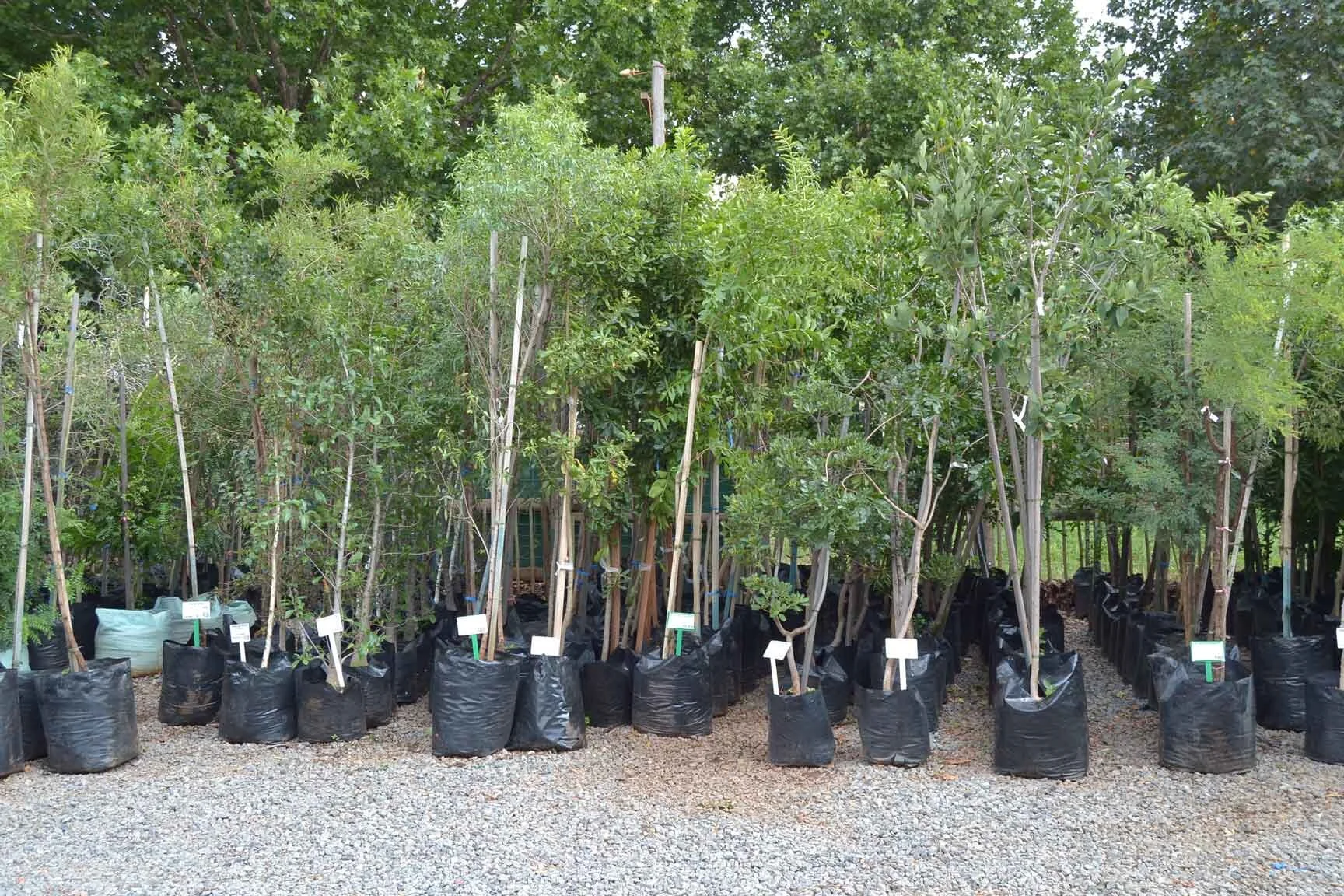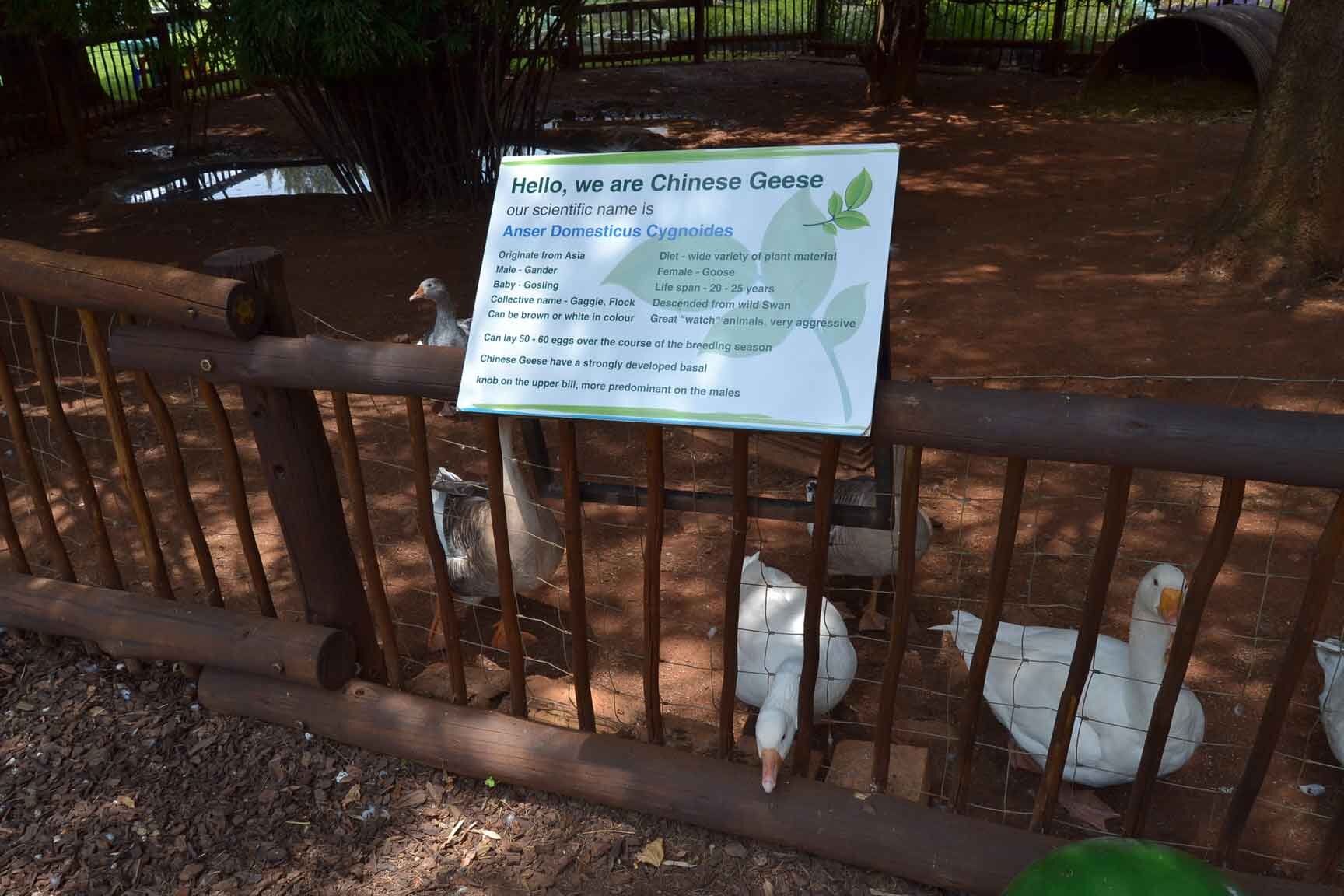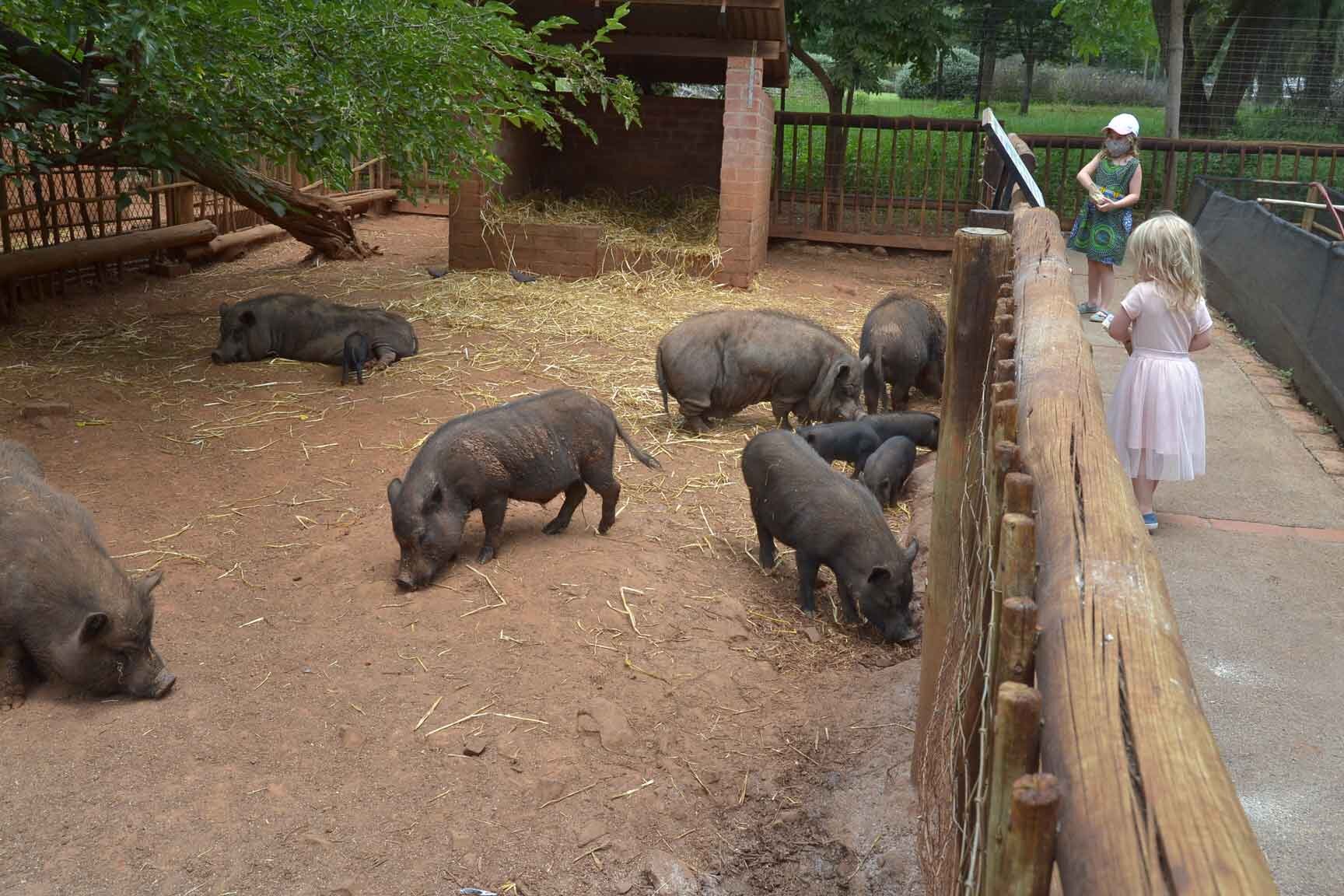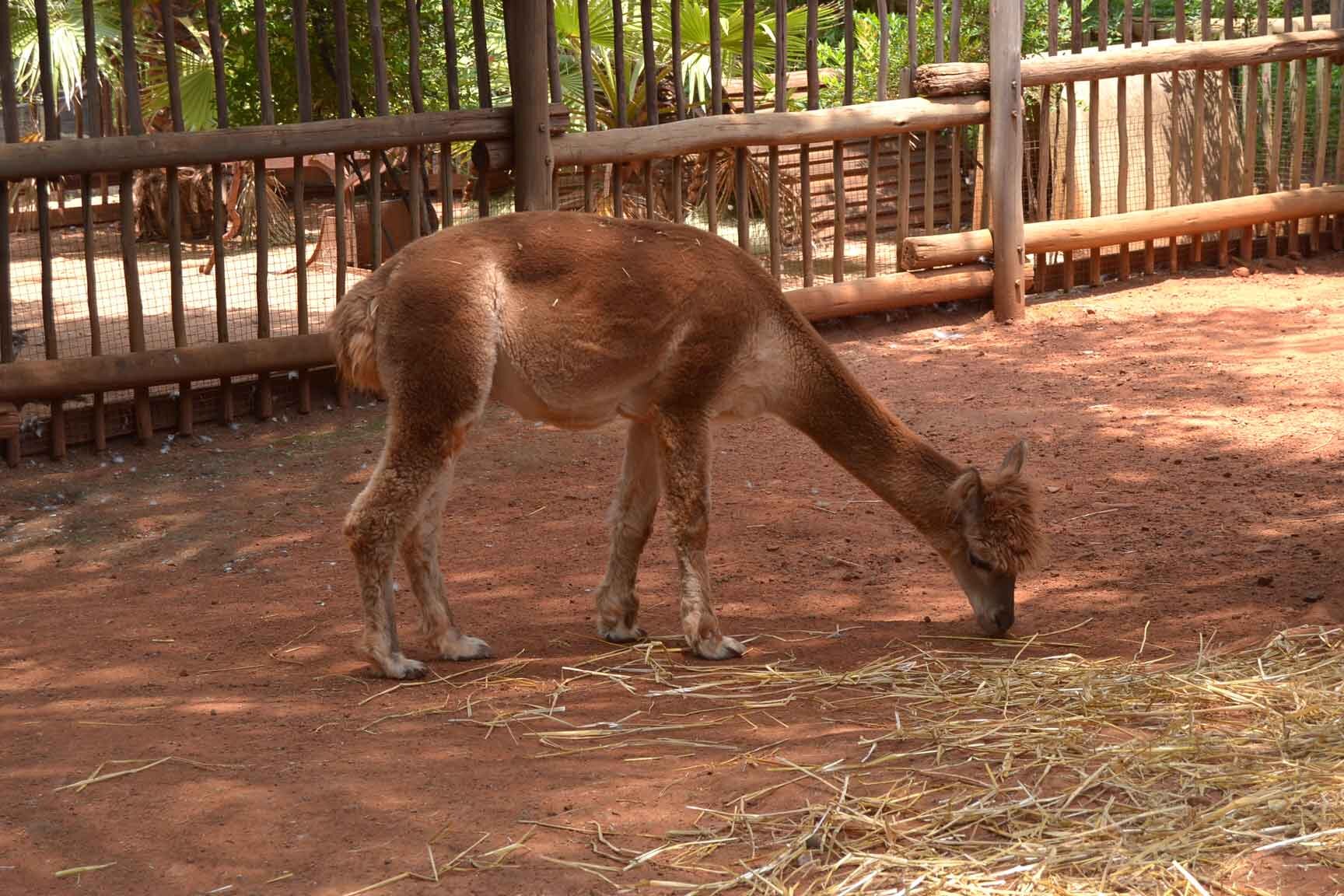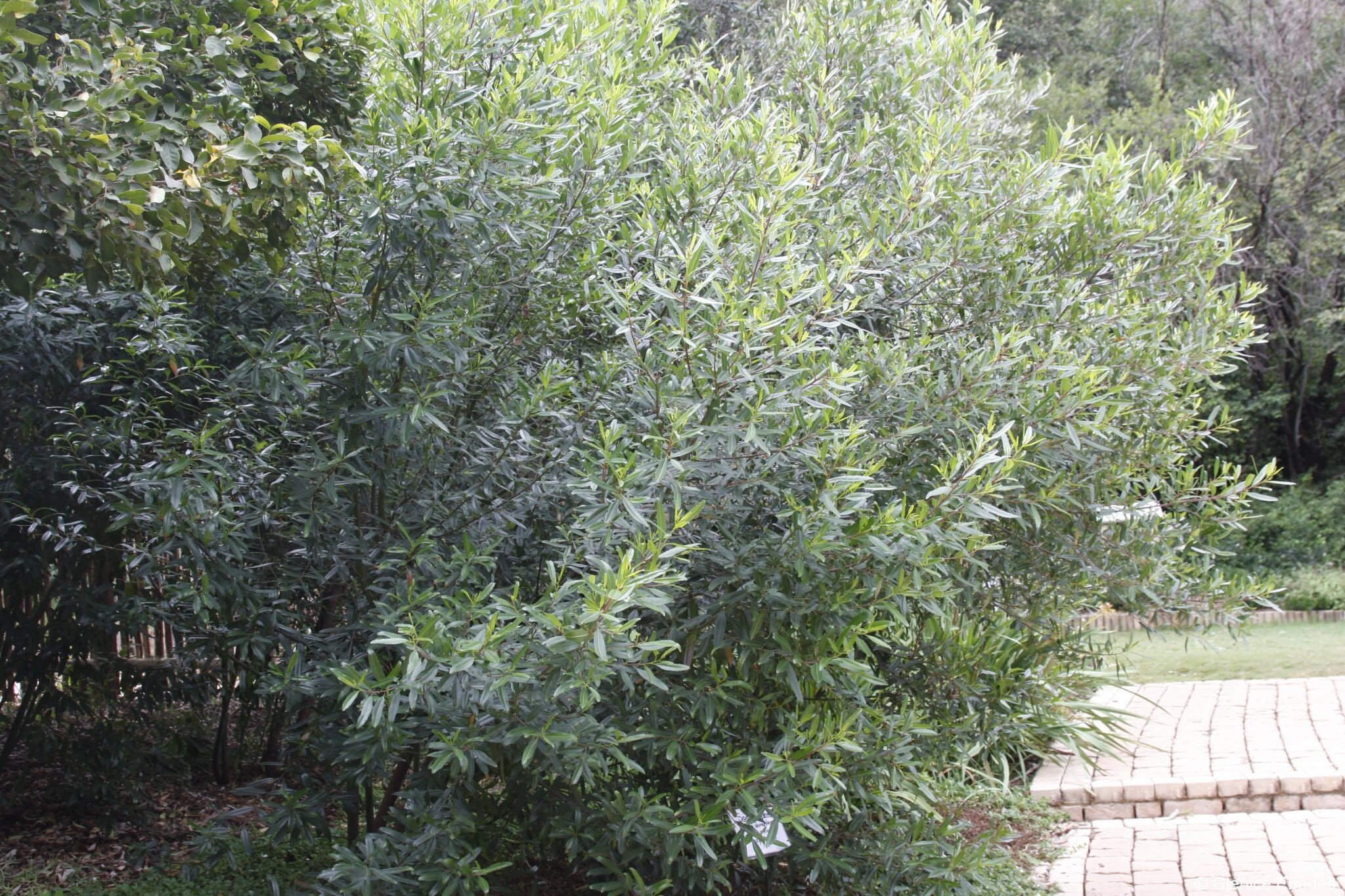
Willow Feather Farm is a nursery located in Irene Pretoria, near the Rietvlei Nature Reserve. It specialises in the growing and supply of frost hardy indigenous trees to the wholesale market. Their main lines of indigenous trees that they grow include: Wild Olive (Olea africana), River Bush Willow (Combretum erythrophyllum), Sweet Thorn (Acacia karoo), Karee (Rhus / Searsia Lancea), White Karee (Rhus / Searsia Pendulina) and White Stinkwood (Celtis africana). These are available in 20, 50, 100, 250 and 500 liter bags. Trees and plants can also be bought from their retail nursery and garden centre.
The first time I visited this nursery (actually every time I visit this nursery!) is not to look at their plants but rather to visit their farmyard and tea garden with my kids. This garden and farmyard is a haven for children because there are not only animals to see and feed but also several jungle gyms throughout the shady garden to play on. The farm animals are a highlight and are kept in neat timber enclosures. A wide variety of animals can be seen including sheep, pigs, goats, cows, chicken, geese, peacocks, guinea pigs, rabbits and even alpacas. For a small amount you can buy the feed which comes in small brown packets and which are labelled so that you can give each animal the correct food.
Our most recent visit to the farmyard was in January 2021 and although the restaurant was closed we could buy drinks from the cafe inside. Entrance is regulated and the small entrance fee of R50 on weekdays and R70 on weekends (no cash payments) ensures the garden is well maintained and children are safely contained within it.
On their website they describe visiting the garden like this “We would like to recreate the experiences and moments that we had on our farm as children. Many children of today do not have the opportunity to run and play in a large established garden, interact with a variety of farm animals, or have a picnic on the grass. We provide a venue where children can experience all of this in the safety and serenity of our farm. Bring your own picnic baskets, drinks and snacks and relax while the kids play.” (https://willowfeather.co.za/)


